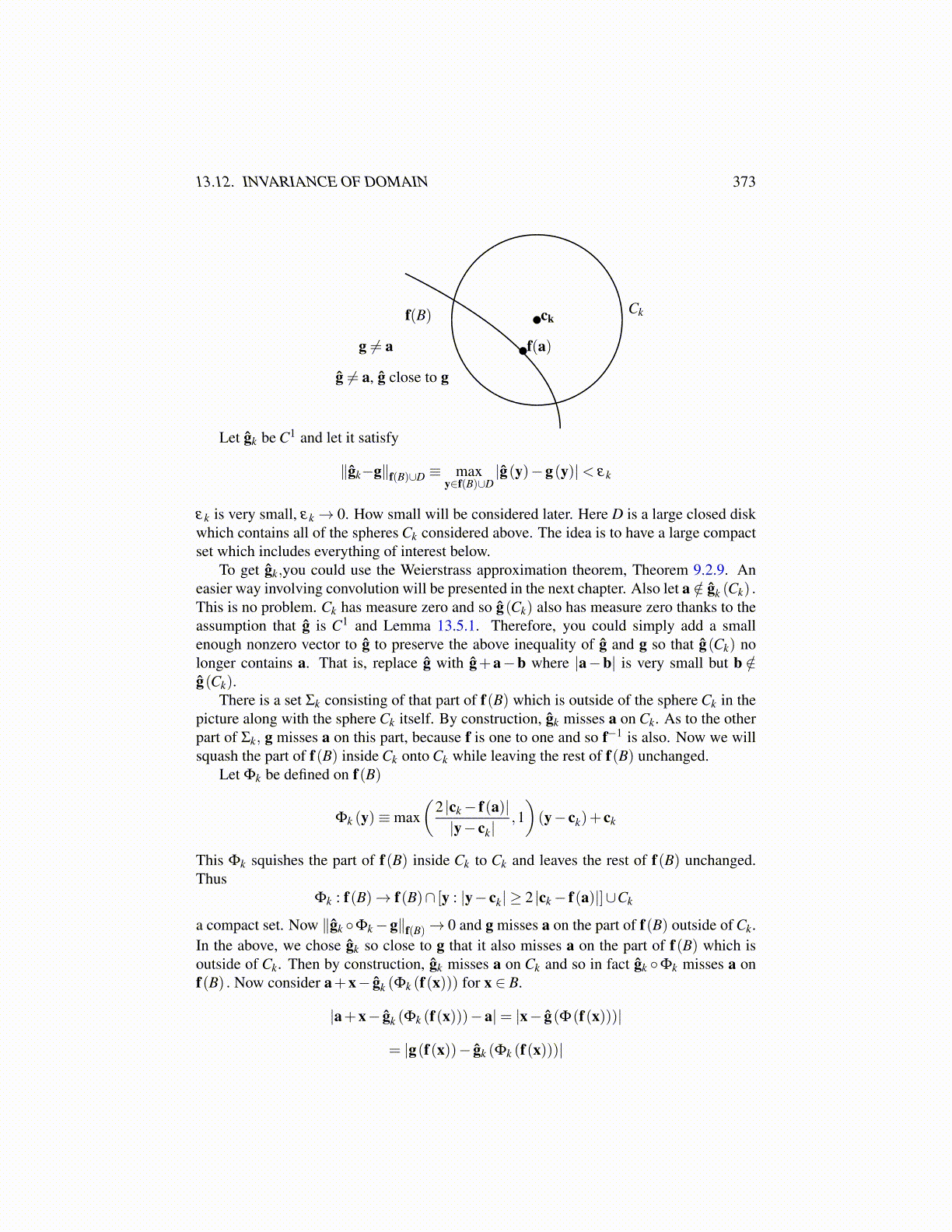
13.12. INVARIANCE OF DOMAIN 373
f(a)
ckf(B)
g ̸= a
ĝ ̸= a, ĝ close to g
Ck
Let ĝk be C1 and let it satisfy
∥ĝk−g∥f(B)∪D ≡ maxy∈f(B)∪D
|ĝ(y)−g(y)|< εk
εk is very small, εk→ 0. How small will be considered later. Here D is a large closed diskwhich contains all of the spheres Ck considered above. The idea is to have a large compactset which includes everything of interest below.
To get ĝk,you could use the Weierstrass approximation theorem, Theorem 9.2.9. Aneasier way involving convolution will be presented in the next chapter. Also let a /∈ ĝk (Ck) .This is no problem. Ck has measure zero and so ĝ(Ck) also has measure zero thanks to theassumption that ĝ is C1 and Lemma 13.5.1. Therefore, you could simply add a smallenough nonzero vector to ĝ to preserve the above inequality of ĝ and g so that ĝ(Ck) nolonger contains a. That is, replace ĝ with ĝ+a−b where |a−b| is very small but b /∈ĝ(Ck).
There is a set Σk consisting of that part of f(B) which is outside of the sphere Ck in thepicture along with the sphere Ck itself. By construction, ĝk misses a on Ck. As to the otherpart of Σk, g misses a on this part, because f is one to one and so f−1 is also. Now we willsquash the part of f(B) inside Ck onto Ck while leaving the rest of f(B) unchanged.
Let Φk be defined on f(B)
Φk (y)≡max(
2 |ck− f(a)||y− ck|
,1)(y− ck)+ ck
This Φk squishes the part of f(B) inside Ck to Ck and leaves the rest of f(B) unchanged.Thus
Φk : f(B)→ f(B)∩ [y : |y− ck| ≥ 2 |ck− f(a)|]∪Ck
a compact set. Now ∥ĝk ◦Φk−g∥f(B)→ 0 and g misses a on the part of f(B) outside of Ck.In the above, we chose ĝk so close to g that it also misses a on the part of f(B) which isoutside of Ck. Then by construction, ĝk misses a on Ck and so in fact ĝk ◦Φk misses a onf(B) . Now consider a+x− ĝk (Φk (f(x))) for x ∈ B.
|a+x− ĝk (Φk (f(x)))−a|= |x− ĝ(Φ(f(x)))|
= |g(f(x))− ĝk (Φk (f(x)))|